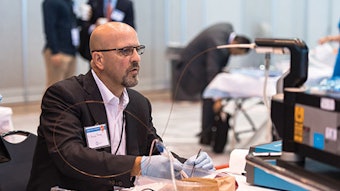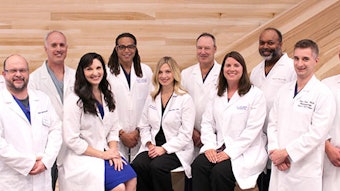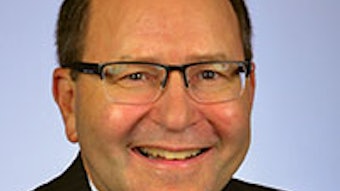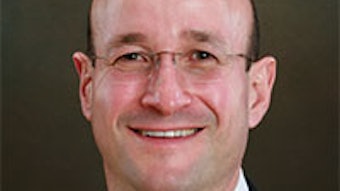On private practice
One of the primary goals of the Academy is to provide our members with the tools they need to provide the best patient care. That involves using our traditional areas of expertise—such as advocacy, analysis, education, and quality—to help create practice paradigms in which otolaryngologists can participate and thrive whether they are generalists or specialists in academic, employed, or private practice.
James C. Denneny III, MD
AAO-HNS/F EVP/CEO
One of the primary goals of the Academy is to provide our members with the tools they need to provide the best patient care. That involves using our traditional areas of expertise—such as advocacy, analysis, education, and quality—to help create practice paradigms in which otolaryngologists can participate and thrive whether they are generalists or specialists in academic, employed, or private practice. Clearly, there are advantages to all the models previously mentioned, and optimal access to our specialty care lies in preserving the opportunity for all these archetypes, which bring significant value through their synergistic and symbiotic relationships.
Congratulations to the 2017-2018 Committees of Excellence!
- Airway and Swallowing Committee; Michael J. Pitman, MD, Chair
- Patient Safety and Quality Improvement Committee; Emily F. Boss, MD, MPH, and C.W. David Chang, MD, Co-Chairs
- Practice Management Education Committee; Brendan C. Stack, Jr., MD, Chair
- Reg-ent Executive Committee; James C. Denneny, III, MD, Chair
While it is unclear what the exact structure of the evolving healthcare system will look like, there are a number of facts and trends that can’t be ignored when identifying future needs. The overarching “elephant in the room” is the fact that, based on its trajectory, healthcare spending in the United States will reach close to 25 percent of the GDP by the year 2025. An economic downturn would only accelerate the situation and aggravate currently existing access problems. Even though there is no political consensus on how to solve this problem, there are trends developing within both the government and private-payer sectors, several of which are very similar. Out of necessity, all versions of a successor system are based on “value.” The accepted definition of “value” is quality/cost, which places quality front and center as the crown jewel for all proposed systematic change. Quality will help balance overzealous reliance on cost going forward.
What is “quality” and who defines it? The answer to those questions will determine the acceptance of any successor system by both the healthcare community and the patients relying on this care for themselves and their families. Initial measures of quality relied on measures that neither physicians nor patients were particularly looking for given the extra time and resources required to collect them, and they met with resistance. As our understanding of meaningful quality and outcomes measures that matter has evolved, adoption has increased. The Academy believes it is essential that otolaryngologists are the primary participants in defining quality care for diseases in which we are the experts. Patients are interested in ways to measure the parameters they are interested in. Can I breathe better? Can I hear better? Is my cancer better? Otolaryngology has responded by creating over 30 validated Patient-Reported Outcome Measures (PROMs).
Some key trends are moving forward without a master plan for the system as a whole, including an ongoing progression toward population health by both CMS and private payers, devaluation of diagnostics and procedures through the “investigational tag” and the Modifier 25 limitation, increasing difficulty navigating the CPT and RUC systems, “leveling the playing field” by reducing or eliminating facility fees, and other regulatory decisions. Private payers are looking for the best way to insert quality into their formula. The trend toward “employed physicians” may well reverse itself as facility fees go away and secondary contracts become less favorable. Finally, in otolaryngology as well as in other specialties, there is a significant trend toward the formation of large, single-specialty groups that can furnish full subspecialty care and have the volume to offer top-of-the-line administrative services as well as negotiate pricing more effectively.
These trends will heavily favor those who can demonstrate the quality of their work as well as control costs. An essential element to success will be the ability to demonstrate comparative quality and effectiveness in your practice. We have been working to establish a fully functional clinical data registry that will allow all participants to do this. Reg-entSM, our registry, is about to progress to Phase II of operations, which will allow all our participants to meet the criteria mentioned above to be successful in evolving payment models. We will be able to incorporate measures for each specialty within otolaryngology, including PROMs, clinical pathways that follow traditional physician patient care, hospital and laboratory data, ASC data, and cost data. That will allow participants the information they need to improve their practice as well as receive proper value for their services in the population health model, which will end up being a tournament model. We are on schedule for these capabilities to be available in time to be valued by participants both locally and nationally.
This will be particularly valuable to those in private practice who will have the information necessary to participate in larger payer systems without being purchased by larger systems and losing their autonomy.











